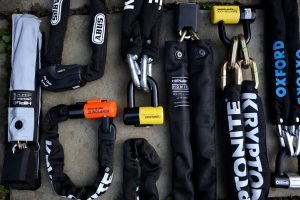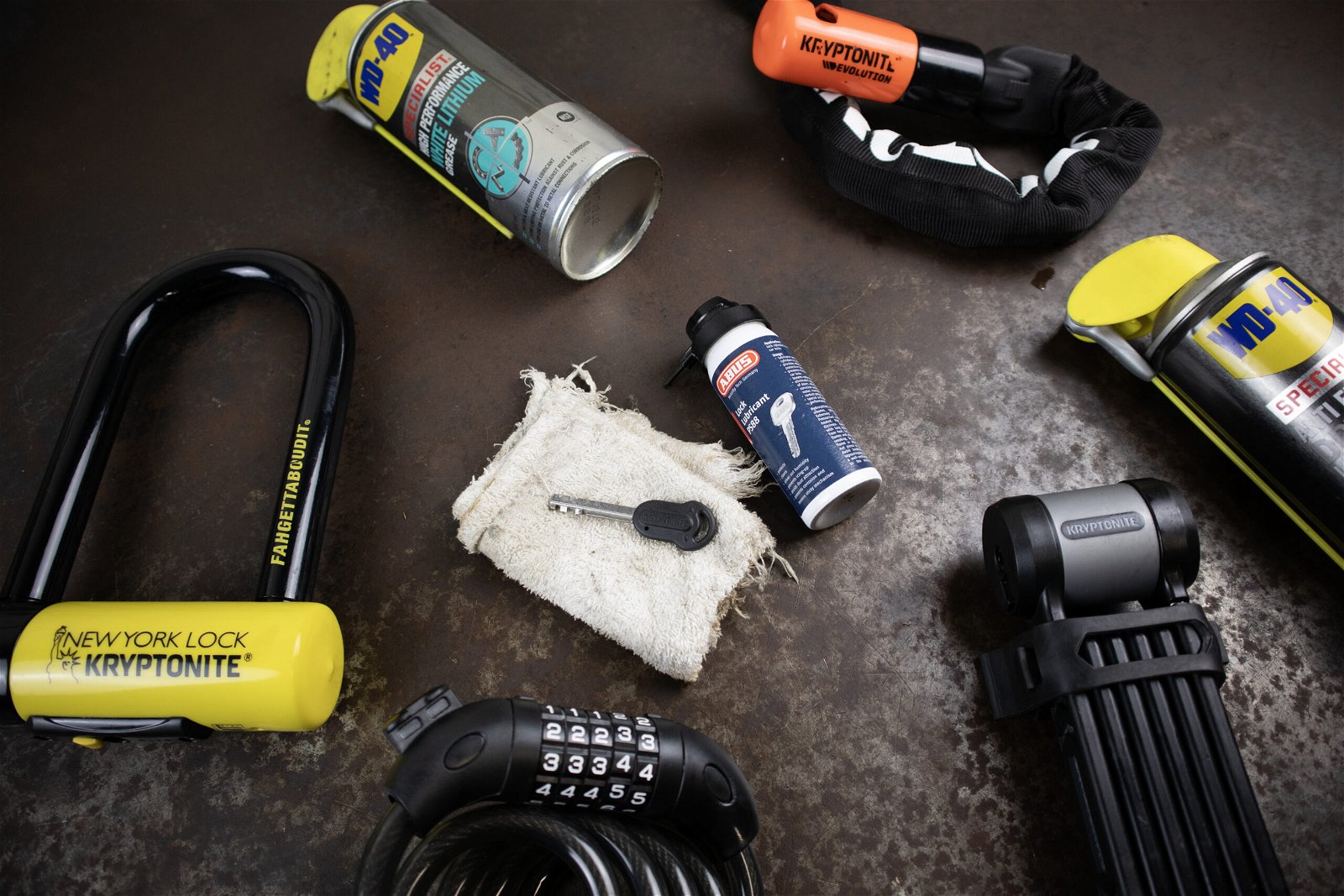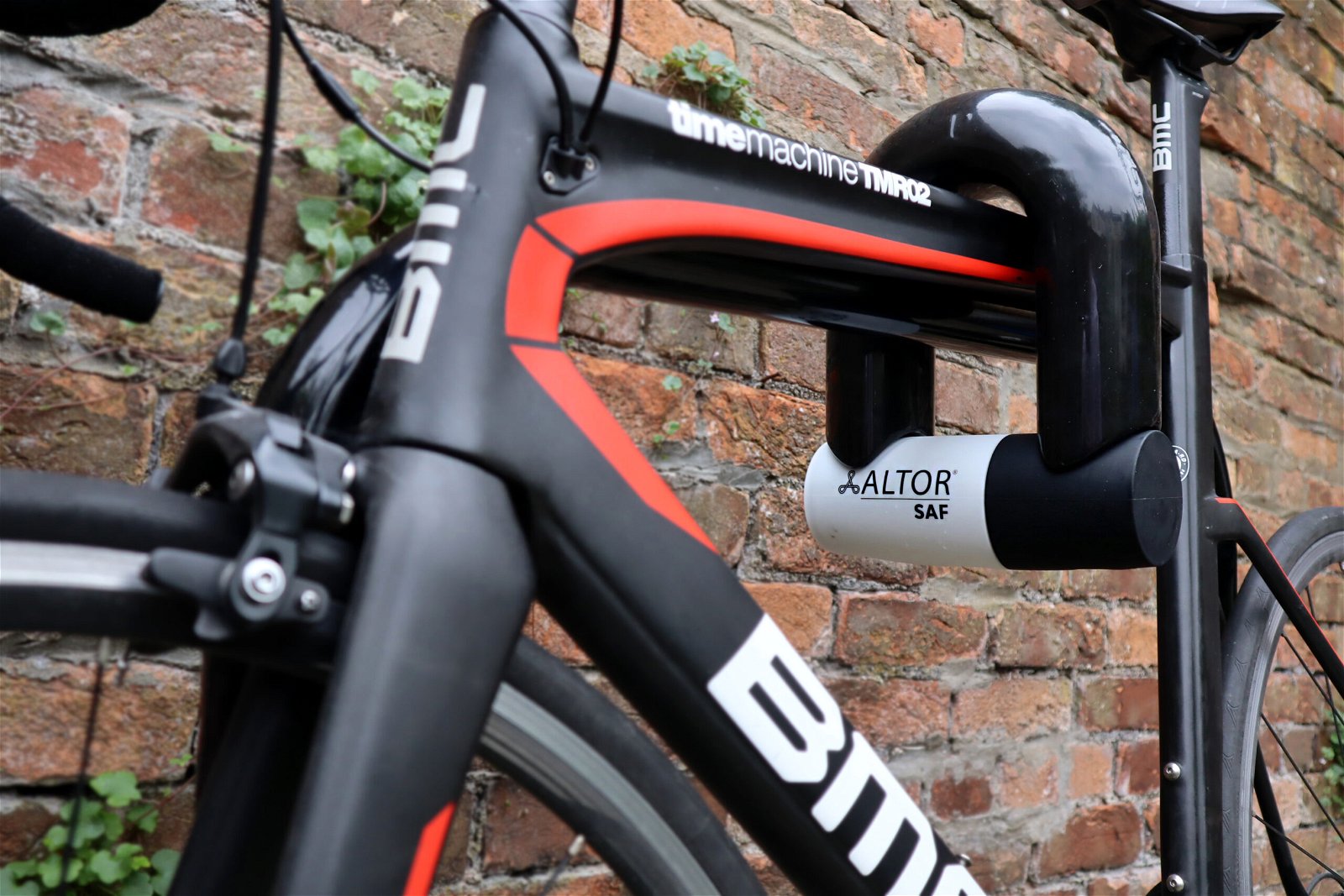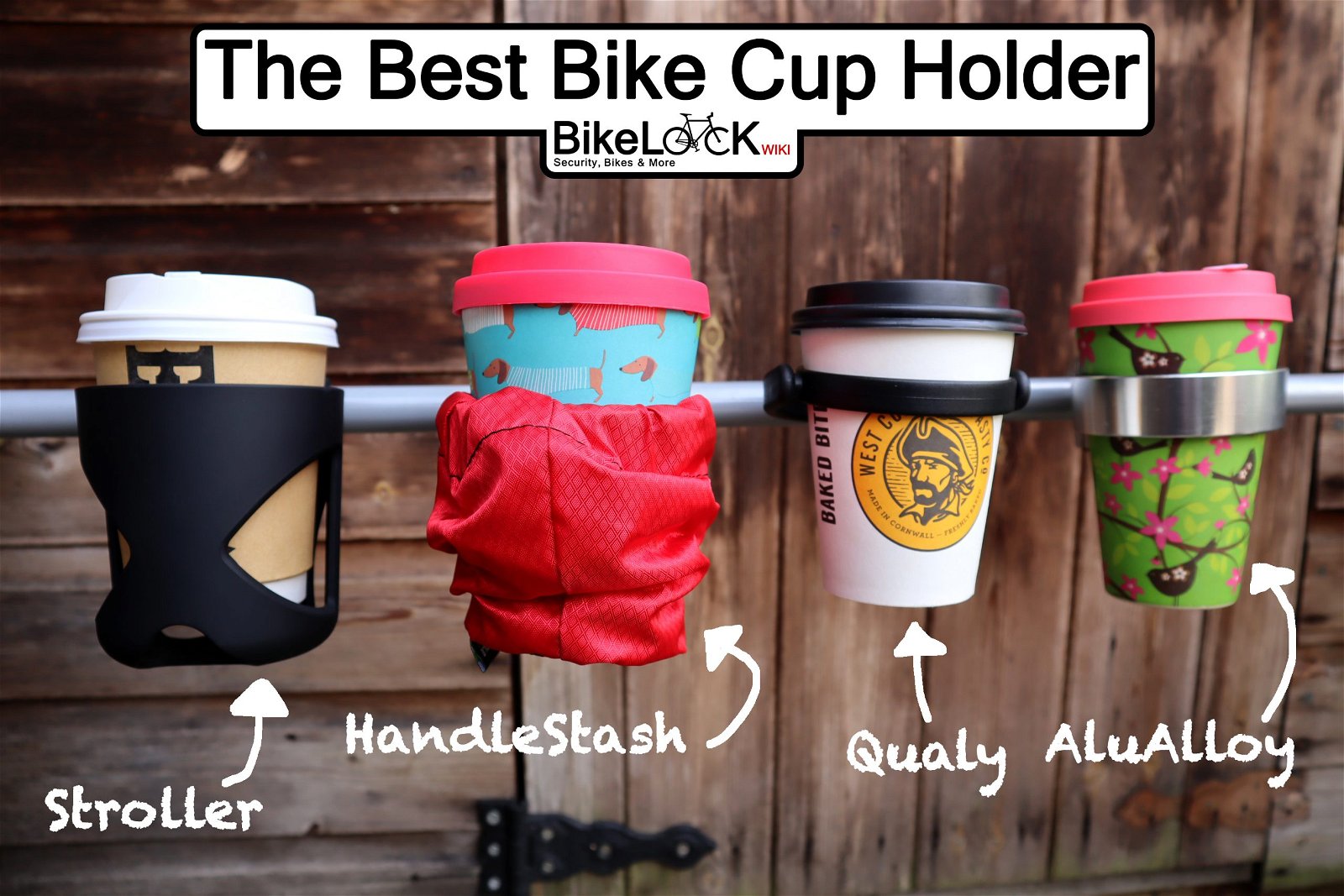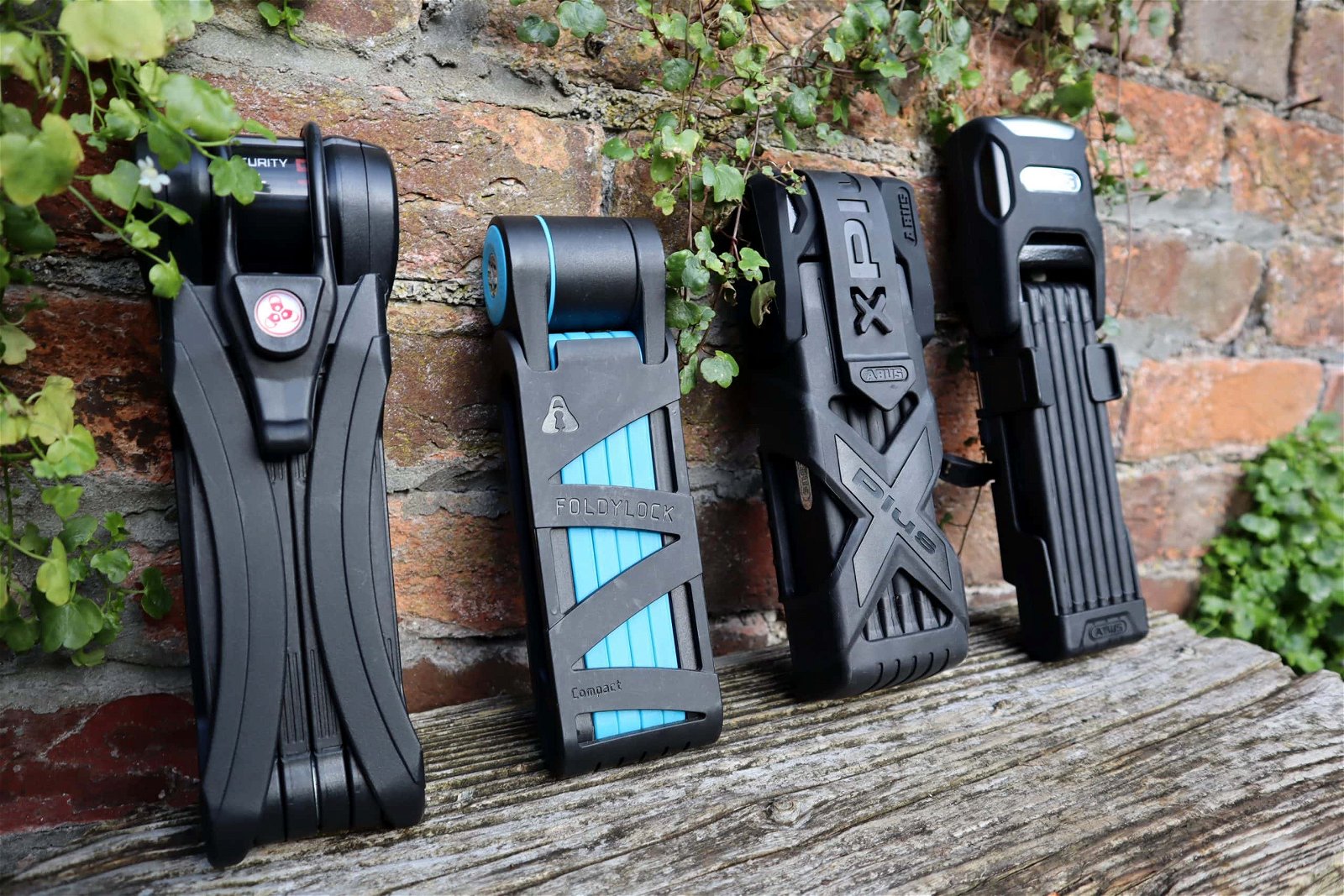
If you’re a keen cyclist, then chances are you’ve ridden a road bike before, but if for some reason you haven’t, then what are you waiting for!
Road bikes are one of the most popular types of bike out there thanks to their ability to transport us quickly around our bustling cities.
But what is a road bike and what size road bike do you need? What is the history of road bikes and how much does a road bike cost?
In this short road biking guide I’ll answer the above questions and much more. Ready to become a road bike expert?
Let’s hit the road.
What is a Road Bike?
As the name suggests, a road bike is a bicycle designed to navigate paved surfaces at high speeds.
Some cyclists refer to road bikes as racing bikes, which makes sense since road bikes are used in various competitive cycling events.
Road bikes can be identified by several distinguishing features, including their lightweight frames, drop handlebars and thin, often slick tires.
The name “road bike” can be used to describe a variety of different bikes, all of which share several common characteristics but have slightly different purposes, such as gravel bikes, fixed gear bikes and cyclocross bikes.
Keep reading, and I’ll explain the benefits that the components of a road bike provide and explain what size road bike you need.
What Is a Road Bike Used For?
Road bikes are one of the most popular types of bike and are much faster in our urban jungles than mountain bikes.
Because of the increased speed road bikes offer on paved surfaces, they are a popular choice with bicycle commuters and anyone who regularly cycles within towns and cities.
As I’ve covered road bikes are designed to be used on paved roads, however, they’re also suitable for flat trails and some off-road paths.

The majority of road bikes would struggle with uneven stony trails, so if you’re looking for a bike that can do both, a gravel bike will be a much more suitable option.
Read my in-depth guide to gravel bikes, to learn more about these versatile bicycles.
In competitive environments, road bikes are used in a multitude of road racing events. Just below I cover some of the most well-known events road bikes are used in.
History of Road Bikes
The history of road cycling goes all the way back to the invention of the first bicycle in Germany, 1817.
Karl Von Drais, a German inventor, created the ‘swiftwalker”, which was essentially a bicycle without pedals.
The “swiftwalker” was designed for riding on paved surfaces and was invented to provide an alternative method of transportation to horses.
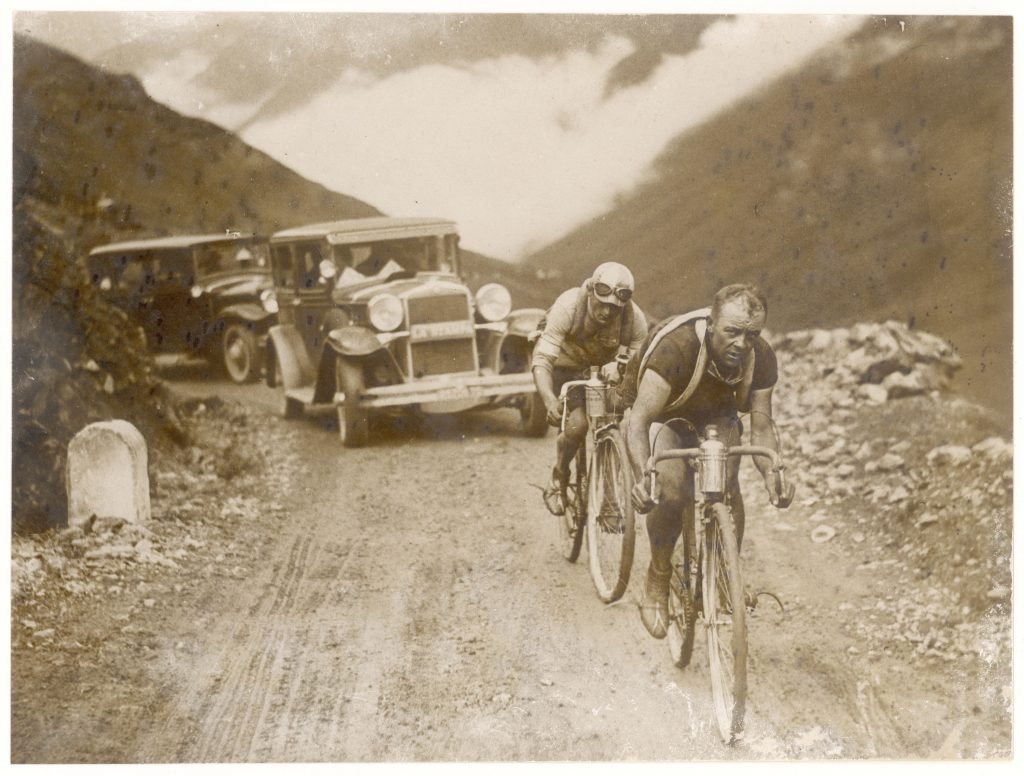
One of the most significant moments in road bike history that contributed to their widespread enjoyment was the very first Tour De France competition, which took place in 1903[2].
Since 1817 road bikes have come on leaps and bounds. Many early road bikes were made with steel frames that were strong but very heavy.
Nowadays, many road bikes are made from carbon fibre, and manufacturers are producing an increasing number of e-bike road bikes.
Read about the different components road bikes use below.
What Are the Components of a Road Bike?
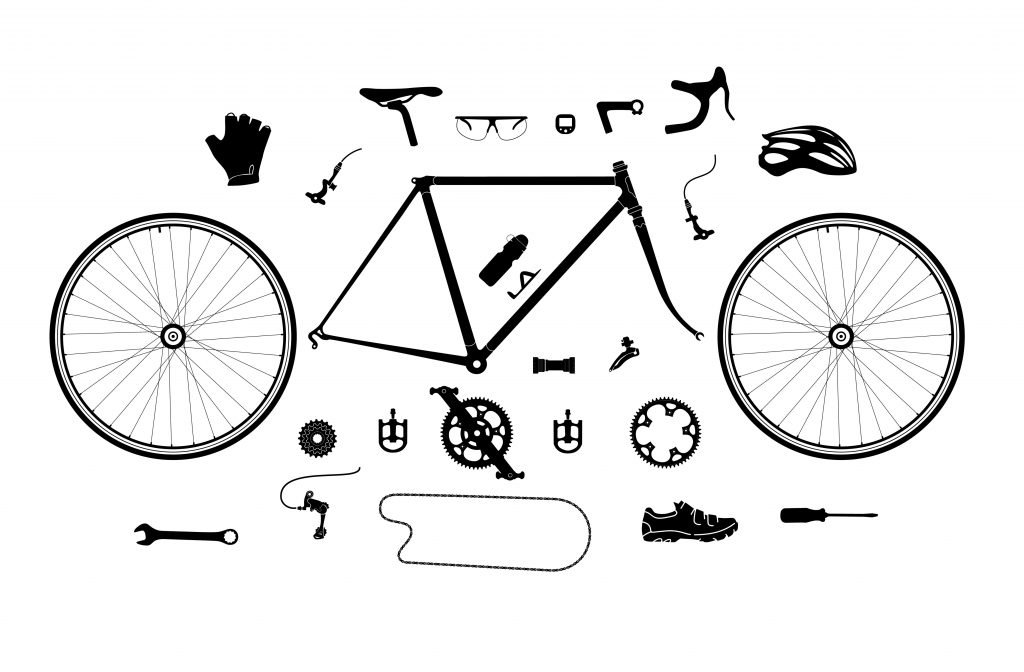
As I explained above, most early road bikes, including those used in the 1903 Tour de France, had steel frames.
Today, cheaper road bikes are made with aluminium as it’s lighter and cheaper to manufacture than steel. That being said, steel road bikes are still manufactured by several brands.
More expensive road bike frames are made from carbon fibre which is significantly lighter and provides a smoother ride.
A handful of manufacturers use titanium, but your options with titanium frames are numbered due to their expensive and difficult manufacturing processes.
Road bikes are built to travel quickly on paved surfaces, so their frame geometry tends to be more aggressive than a hybrid bike or a city bike.
This forward-leaning geometry places riders in a position that provides better aerodynamics whilst riding.
As hinted above, the majority of road bike frames are accompanied by a set of forks. These stock forks have been optimised to work best with the frame, and together we call these a frameset.
Due to the flatter surfaces that road bikes are intended for, the wheels and tires they use are slim compared to hybrid and mountain bikes.
That being said, in recent years, we’ve seen an increased demand for wider road bike wheels and tires. This demand is for two reasons.
Firstly, consumers want a more versatile road bike that can handle a battering on gravel paths and rocky trails (hence the birth of gravel bikes). And secondly, slightly thicker tire and wheel setups are shown to perform better aerodynamically.
Stock road bike wheels tend to be made from aluminium. However, many cyclists choose to upgrade their aluminium to lighter carbon wheels.
In general, road bike wheels use fewer spokes and skimpier rims because minimal stress is exerted on them whilst riding on paved surfaces.
Some riders also make use of deep-section and disc wheelsets, which help to increase aerodynamics whilst riding.
The handlebars most road bikes utilise are called drop bars for obvious reasons.
Drop bars provide multiple riding positions for different circumstances:
- The tops of drop handlebars (palms facing down) are perfect for riding casually and provide easy steering and access to your shifters
- The tops of your shifters are referred to as hoods, and whilst griping these, you’ll benefit from a good position for uphill or casual cycling
- Finally, the drops are the lowest part of the handlebars on a road bike and are used to tuck up and reduce drag whilst cycling
Road bike levers, often referred to as Shimano Total Integration shifters or STIs, combine brake levers and gear shifters into one component.
Originally the gears of a road bike were attached to the front of the top tube, but riders had to release their handlebars to change gears.
Now with integrated shifters, gears are changed easily whilst riding in most positions, and brakes can be used simultaneously if required.
The drivetrain of any bike is made up of all of the components used to push or pull the bike.
These are the:
- Pedals
- Chainrings
- Cranks
- Chain
- Cassette
- Derailleurs
Pedals are a common talking point with road bike fanatics. You can have SPD, SPD-SL, Speedplay pedals (and many more) or none of these and keep it simple with standard flat/platform pedals.
Various pedals offer different benefits, so it’s worth finding your ideal pair.
The majority of cranks for road bikes are 175mm in length. However, various lengths are available to cater for riders of different heights.
Many modern road bikes now come equipped with a 50-34t “compact” chainring setup (t standing for teeth).
This means modern road bike gears are lower than the traditional “standard double”, which uses 53/39t chainrings and are easier to turn.
Each of the drivetrain components can be customised to suit your preference and riding style.
Modern road bikes tend to use one of two brake types:
Rim brakes (also referred to as calliper brakes) apply rubber pads to the braking surface of your bike’s wheels to reduce your speed whilst cycling.
Disc brakes are the second type of brakes road bikes use. Disc brakes are a modern concept and are becoming more popular with cyclists due to their increased braking strength and reliability in difficult weather conditions.
Instead of applying friction to the braking surface of your wheels, disc brake rotors are attached next to the hub of either wheel and sit inside a calliper that uses the rotor as the braking surface.
Disc brakes take a deeper level of understanding to maintain, but many cyclists opt for these instead of rim brakes due to the benefits they provide.
Road bike saddles tend to be much more minimal than the saddles you see on hybrid bikes or mountain bikes.
Due to the increased speed at which riders typically pedal on a road bike, road bike saddles tend to be narrower towards the front. This narrow front end minimises chaffing against the thighs when pedalling.
A wider saddle would get in the way and could cause issues for road bike cyclists.
The rear of road bike saddles tends to have some padding, reducing the impact of lumps and bumps in the road. However, this padding is minimal to keep the overall weight of the saddle to a minimum.
Who Should Use A Road Bike?
Road bikes are designed to travel at high speeds with as little effort as possible. This makes road bikes a great option for many cyclists.
Cyclists who compete in road bike races and similar competitions will benefit from using a road bike. Entering a road race whilst using a mountain bike may be possible, but you’d be at a great disadvantage.
Casual cyclists and commuters can also enjoy the speed road bikes offer. As a result, your commute to work will be faster and less strenuous, allowing you to enjoy a few more minutes in bed each morning!

If you live in a city, a road bike is undeniably one of the best types of bike you can choose. However, if you prefer a bike that demands minimal maintenance a fixed gear bike will likely serve you better than a road bike.
If you’re considering a road bike, you should consider the ergonomics each road bike offers.
Do you want a road bike with an aggressive riding position that offers better aerodynamics? Or a road bike that offers a more relaxed upright riding position for more comfortable yet speedy commutes?
Finally, if you enjoy off-road and trail cycling as well as hitting the roads, a hybrid bike or a gravel bike may be more suitable.
The links above will take you to an in-depth guide for either bike type!
How to Lock a Road Bike
The most important step of securing your road bike is using a good quality security setup that reflects the value of your bike.
UK police advise that you spend at least 15% of the value on its security, I concur.
I’ve put together several guides reviewing the best bike locks on the market. If you have invested a large sum of money in your bike or can’t stand the thought of it being stolen, you’ll want to take a look at the top-performing locks in the world.
If you’re unsure about how to lock your bike, have a read of my in-depth guide here. I also cover how to beat bike thieves in this informative article.

How Much Does a Road Bike Weigh?
To determine how much the average road bike weighs, I compiled a table below and have included the weight and price of 15 randomly selected road bikes.
The bikes selected were found across different US and EU websites.
I attempted to keep the readings consistent with the medium road bike frame size 54-55cm. However, a few brands only provided weights for one size, so the frame sizes are provided alongside the corresponding weight.
Just below the table, I explain how much a road bike weighs and include the average weight of a road bike.
| Bike Model | Weight | Frame Size (cm) |
|---|---|---|
| TREK DOMANE AL 2 2021 | 23.3lb / 10.6kg | 56 (L) |
| CANNONDALE Synapse 2020 | 22.9lb / 10.4kg | 56 (L) |
| Trek Madone SL6 2020 | 19.0lb / 8.6kg | 56 (L) |
| Vitus Razor Claris 2021 | 23.4lb / 10.6kg | 54 (M) |
| Van Rysel EDR CF | 17.9lb / 8.1kg | 54 (M) |
| Cube Attain Pro 2021 | 22.7lb / 10.3kg | 54 (M) |
| Vitus ZX-1 EVO CR 2021 | 18.3lb / 8.3kg | 54 (M) |
| Giant Propel Adv Pro 2021 | 17.9lb / 8.1kg | 54 (M) |
| Ribble Endurance SL Disc | 19.8lb / 8.8kg | 52 (S) |
| Ribble R872 Sport | 19.8lb / 9.0kg | 54 (M) |
| Planet X London Road Classic | 22.3lb / 10.1kg | 54 (M) |
| Planet X EC-130E Rivet Rider | 18.0lb / 8.2kg | 54 (M) |
| Niner RLT 3 Star | 21.5lb / 9.8kg | 54 (M) |
| Scott Speedster 20 Disc | 22.5lb / 10.2kg | 54 (M) |
| Raleigh Merit 2 2017 | 23.1lb / 10.5kg | 54 (M) |
So as you can see above, I selected a wide variety of brands and different priced road bikes to determine how much a road bike weighs.
With all 15 of the randomly selected road bike’s weights summed together, the average weight of a road bike comes to 20.7lb (9.4kg).
The average road bike weighs roughly 20.7lb (9.4kg), and the majority of road bikes will weigh between 8kg – 11kg. This range encompasses both low and high-end road bikes.
How Much Does a Road Bike Cost?
If you’ve been thinking about purchasing a new road bike but are wondering how much a road bike costs, the data below will help you understand the rough price of your average road bike.
The online stores that I selected my random examples from were more specialist stores. The majority of the bikes included below are mid-level road bikes for keen road cyclists.
| Bike Model | Price |
|---|---|
| TREK DOMANE AL 2 2021 | $1,235 / £895 |
| CANNONDALE Synapse 2020 | $1,375 / £1,000 |
| Trek Madone SL6 2020 | $6,335 / £4,600 |
| Vitus Razor Claris 2021 | $965 / £700 |
| Van Rysel EDR CF | $4,130 / £3,000 |
| Cube Attain Pro 2021 | $1,375 / £1,000 |
| Vitus ZX-1 EVO CR 2021 | $3,855 / £2,800 |
| Giant Propel Adv Pro 2021 | $6,200 / £4,500 |
| Ribble Endurance SL Disc | $2,615 / £1,900 |
| Ribble R872 Sport | $1,515 / £1,100 |
| Planet X London Road Classic | $1,035 / £750 |
| Planet X EC-130E Rivet Rider | $1,925 / £1,400 |
| Niner RLT 3 Star | $2,525 / £1,835 |
| Scott Speedster 20 Disc | $1,200 / £870 |
| Raleigh Merit 2 2017 | $850 / £615 |
Adding together the prices of the 15 randomly selected road bikes above and dividing by 15 gives us an average price of $2,475 (£1,800).
As this data suggests, the average price for a mid-high level road bike is $2,475 (£1,800).
If you’re looking to purchase a new road bike (mid-high level), you can expect to pay between $850 (£615) and $6,335 (£4,600).
Low-end road bikes can be purchased for as cheap as $350 (£250), but these bikes use cheap components that aren’t designed to last. On the other hand, if you’re shopping for a top-end road bike, you can expect to pay upwards of $13,750 (£10,000).
What Size Road Bike Do I Need?
To accurately determine which size road bike will work best for you you’ll need:
- Your Total Height
- Your Inside Leg Length
To accurately measure your height, you’ll need an assistant, a book and a tape measure.
- Stand relaxed with your shoes off, feet together, and your back against a wall.
- Take a sturdy item such as a book and have your assistant place it on top of your head, holding it level against the wall.
- Now step away from under the book and use a tape measure to measure (using centimetres or feet and inches) from the ground to the bottom of the book.
This is the most accurate way to measure your height at home to find out what size road bike you’ll need.
To measure your inside leg to discover what size road bike you need, it’s essentially the same process as measuring your height.
- Shoes off, stand relaxed with your back against the wall, feet spread slightly as if standing normally.
- Take the book or marker you used for measuring your height and place it between your legs, up to your crotch.
- Now measure from the floor to the top of the book (again, either centimetres or feet and inches will work)
This measurement is your inside leg length and will help to provide more accurate road bike sizing.
Men's Road Bike Size Guide Chart
While these sizes are labelled as “men’s”, many women opt to use bikes with flat top tubes labelled as “men’s”.
If you’re not sure which frame style you prefer, go to your local bike store and test ride a bike of either type.
| Rider Height | Inside Leg Length | Men's Road Bike Frame Size |
|---|---|---|
| 4'10"-5"0" / 147-152cm | 26" / 66cm | XX Small / 47-48cm |
| 5'0"-5'3" / 152-160cm | 27" / 69cm | X Small /49-50cm |
| 5'3"-5'7" / 160-170cm | 28" / 71cm | Small / 51-53cm |
| 5'7"-5'9" / 170-175cm | 30" / 76cm | Medium / 54-55cm |
| 5'11"-6'2" / 180-188cm | 32" / 81cm | X Large / 59-60cm |
| 6'2"-6'5" / 188-196cm | 34" / 86cm | XX Large / 60-62cm |
| >6'5" / >196cm | 36" / 91cm | XXX Large / 62-63cm |
Women's Road Bike Size Guide Chart
As covered above, men and women’s bikes are both unisex but offer different ergonomics for varying rider body proportions.
Women may choose to ride a men’s road bike, and men may choose a women’s bike. A bike is a bike. The only difference will be the way the bike feels and performs when riding.
Again if you’re unsure of your preference, go for a test ride! Otherwise, the table below will help you find out what size women’s road bike you need.
| Rider Height | Inside Leg Length | Women's Road Bike Frame Size |
|---|---|---|
| 4'10"-5"1" / 147-155cm | 26" / 66cm | XX Small / 44-46cm |
| 5'1"-5'3" / 155-160cm | 27" / 69cm | X Small /47-49cm |
| 5'3"-5'5" / 160-65cm | 28" / 71cm | Small / 50-52cm |
| 5'5"-5'8" / 165-172cm | 30" / 70cm | Medium / 53-55cm |
| >5'8" / >172cm | 31" / 79cm | Large / 56-57cm |
What Competitions/Events are Road Bikes Used In?
At the Olympic level, road bikes have been utilized in Olympic road racing since the very first summer Olympic games in Athens in April 1896[3].
Outside of the Olympics, the UCI host the Road World Championship, which began in 1921 and is hosted yearly during August & September.
The UCI also host the Road World Tour (founded 2009), made up of 38 different events with 19 ProTour teams fighting it out for a place on the podium.
The top cyclists in the world participate in these prestigious UCI events, some of the most spectated events in world cycling.

And last but not least, the Tour de France. Undoubtedly, the most well-known cycling event. This race comprises 21 stages, which take place over 23 days of gruelling, mountainous road cycling.
Outside of professional events, there are many cycling leagues and tournaments for cyclists of all abilities to enjoy!
Road Bike vs Hybrid Bike Benefits
| Road Bike Benefits |
|---|
|
|
|
|
|
| Hybrid Bike Benefits |
|---|
|
|
|
|
|
Risks of Road Cycling & How to Reduce Them
The risks that accompany riding a road bike can be eliminated by taking a few simple precautions.
One of the main risks when riding a road bike is colliding with other road users such as cars and cyclists. This can cause serious injury to all involved.
To avoid crashes on your road bike, cycle at speeds you’re comfortable with and keep your distance from other road users. This will give you time to react should someone make an unexpected turn or a sudden decrease in speed.

Data shows [4] that using a bicycle helmet reduces the risk of serious head injury in a collision by over 70%.
The US National Library of Medicine examined 225 cyclist deaths [5] in New York between 1996 and 2005, finding that 97% of the deceased were not wearing helmets at the time of the incident.
The same publication shows that only one of the 225 fatalities was killed when riding in a bike lane.
This data shows that regardless of the bike type you’re riding, you should always:
- Wear a helmet
- Ride in bike lanes where provided
- Comply with the rules of the road
This list is in no way exhaustive but, by adhering to these three simple rules, whilst riding a road bike, you’ll significantly reduce your chances of being involved in a serious accident.
Environmental Impact of Using a Road Bike
Of course, road bikes are great for the environment. Since road bikes make for excellent commuter bikes due to their exceptional performance in urban environments, they can easily remove the need for taking a car to and from work and on other journeys.
Over time, this reduced usage of fossil fuel-powered transport will make a huge difference in reducing your carbon footprint.
Additionally, opting for clean transport within cities greatly improves air quality and reduces respiratory illness and diseases.
On top of all this good stuff, you’ll also be healthier and happier when cycling. So get out there and ride your road bike!
Does the Bike Require Anything to Keep Functioning?
If you understand basic bike maintenance such as cleaning & lubrication, tube and tire replacement and brake maintenance, you won’t need to know much more to keep your road bike in a reliable working condition.
Of course, you’ll need to replace more complex parts from time to time, which might require assistance from a trained professional. If you’re ever unsure about bike maintenance, it’s worth a trip to your local bike shop.
What to Wear When Riding a Road Bike
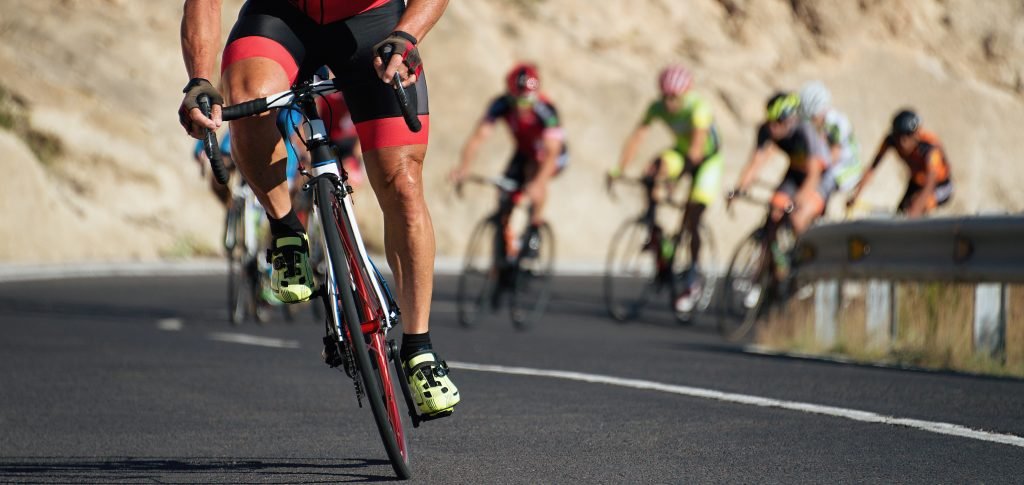
When it comes to outfit choices with road bikes, your options are endless.
If you’re a casual cyclist and use your road bike for commuting and occasional exercise, some sport shorts and a t-shirt will normally be more than enough (not forgetting your helmet!).
If you take your cycling more seriously and want the best aerodynamics, tight cycling shorts and a jersey will serve you well. In addition, most cycling shorts incorporate padding that will save your rump as you pass over any bumps!
On top of this, you’ll want a pair of clipless cycling shoes. Cycling shoes greatly increase your pedalling efficiency as they allow you to pull on your pedals as well as pushing.
Waterproof layers are another smart choice for those who live in areas that frequently experience rain.
Another essential clothing accessory for road cyclists is a pair of cycling glasses. These will stop your eyes from watering when travelling at high speeds and will prevent foreign objects from entering your eyes. Make sure to get a pair that provide sufficient UV protection.
What Accessories are Recommended When Using a Road Bike?
It’s never a bad idea to invest in a few accessories to make your time cycling as comfortable and effective as possible.
Because road bikes are most often used in dense cities, bike locks, lights, and mirrors allow for optimum safety and security.
Most people with road bikes also have bottle cages and a puncture repair kit on hand for emergencies.
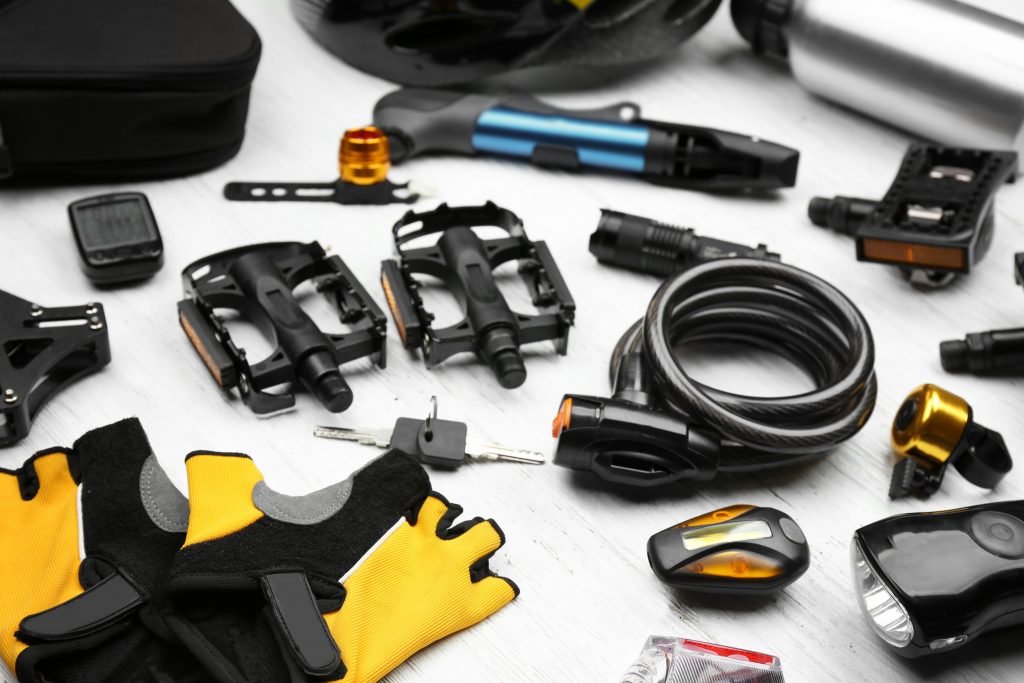
Having to walk your bike long distances in cycling shoes is not ideal, so you should at the very least be able to change a flat tire when you need to
Finally, if you enjoy the competitive aspect of cycling either with yourself or against others, then a cycling computer/GPS will be a great purchase.
A cycling computer will allow you to keep track of route times, distances, cadence and power, as well as monitoring your fitness.
Summary - What Is a Road Bike?
I hope you were able to take a lot from this detailed guide. You should now know what a road bike is, if you didn’t to begin with!
I love road cycling and own several road bikes, which I use almost daily.
If you take anything away from this guide, it should be that cycle safety should not be overlooked. Bike lanes are there for a reason, and helmets should always be worn.
As careful as you may be on your road bike, you can’t control what other road users do. So wear a helmet and ride safely!
As always, use a top-quality bike lock to secure your bike. You can read about the best bike locks here. Lock it, or lose it!
Thanks for reading. Feel free to check out some of my other informative guides. I’m sure you’ll find them helpful.
Ciao for now.
[1] historyofinformation.com/detail.php?id=2054
[2] britannica.com/sports/Tour-de-France
[3] olympic.org/cycling-road
[4] helmets.org/stats.htm
[5] shorturl.at/esBSU
[6] gov.uk/government/publications/health-matters-air-pollution/health-matters-air-pollution
Author of This Post:

James Grear (Lead Editor)
Understanding how devastating it is to have a bike stolen, I've researched & immersed myself in the world of bicycle security since 2013.
I then built BikeLockWiki in 2019 to share everything I'd learned with the worldwide cycling community so that cyclists can improve their bike security skills and make informed decisions when purchasing new products and services.
Learn More about Me & BikeLockWiki here.


